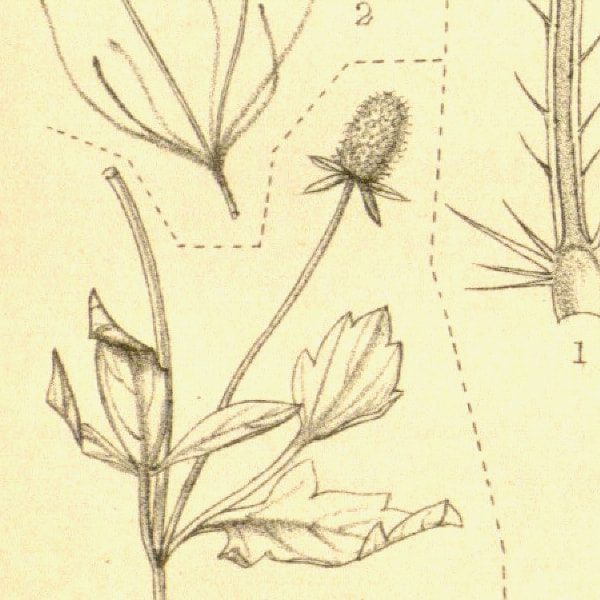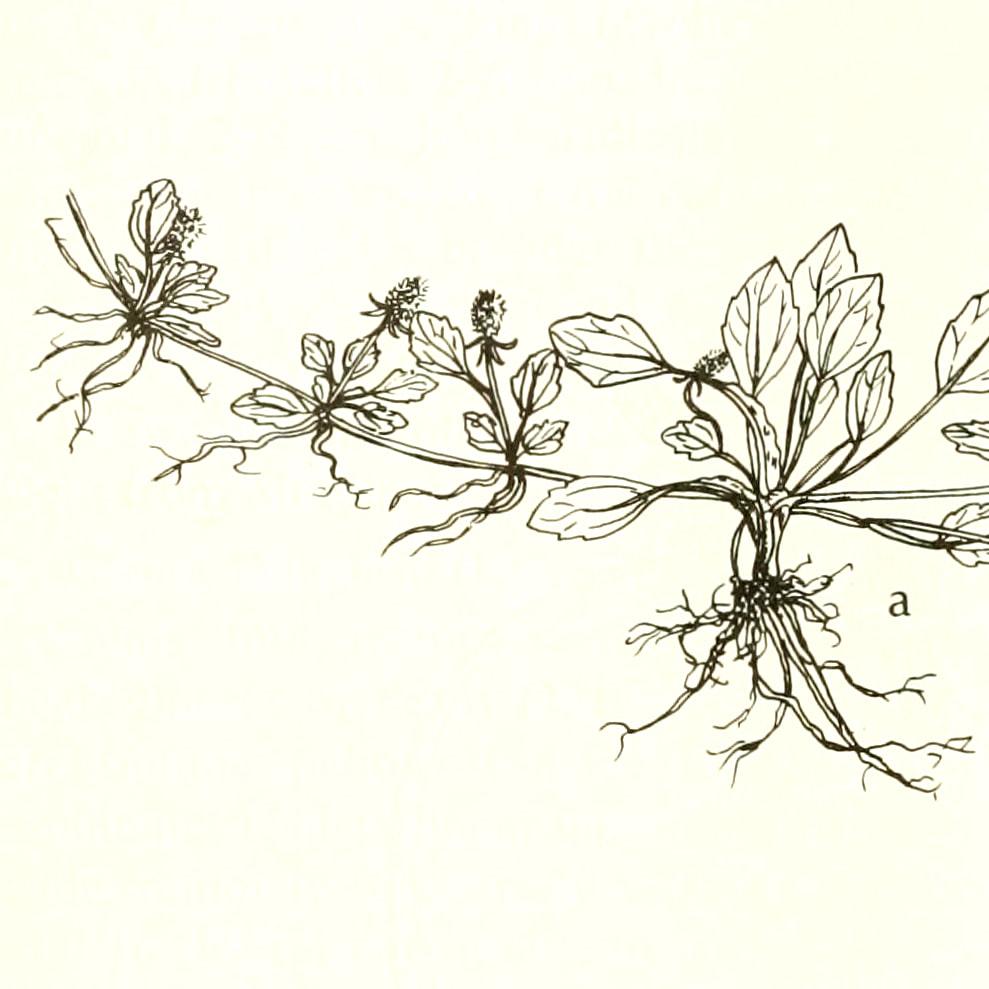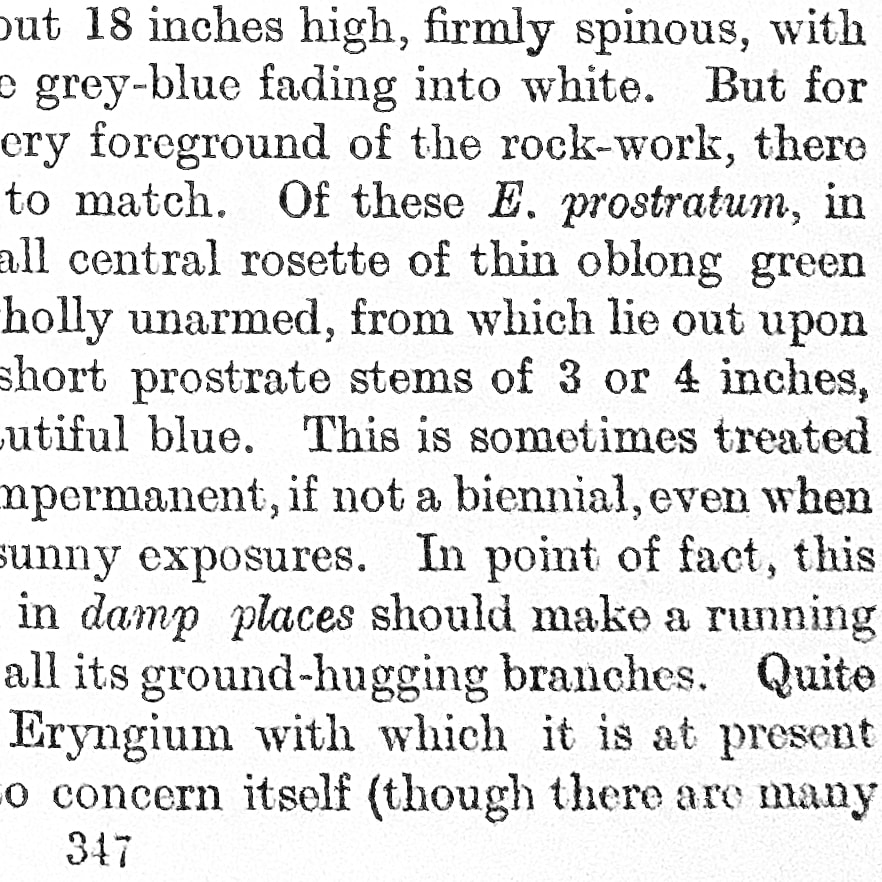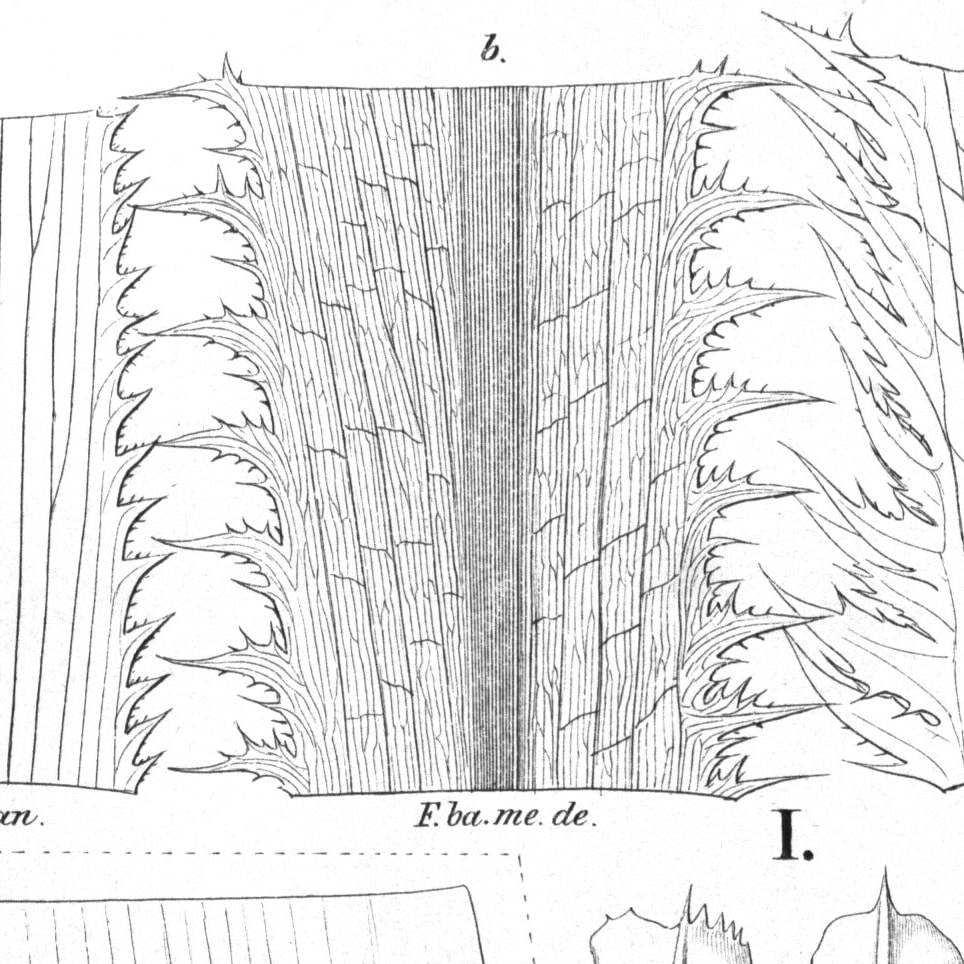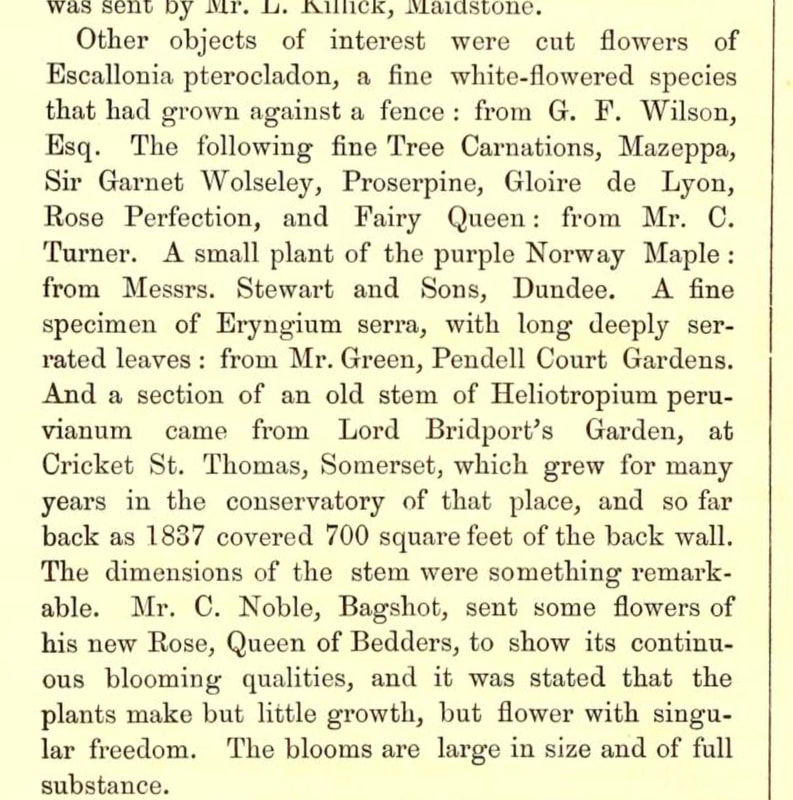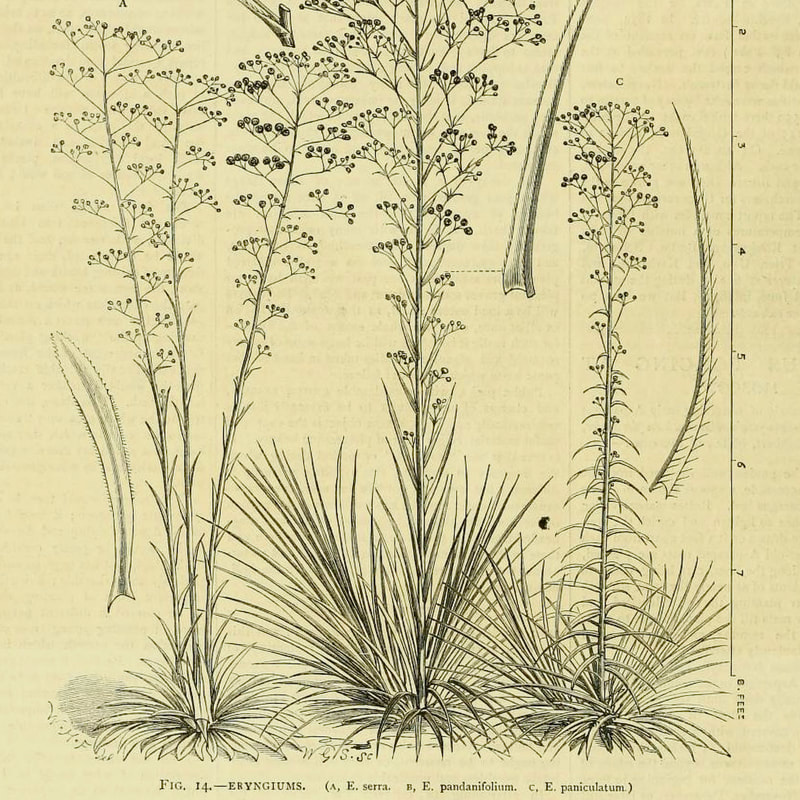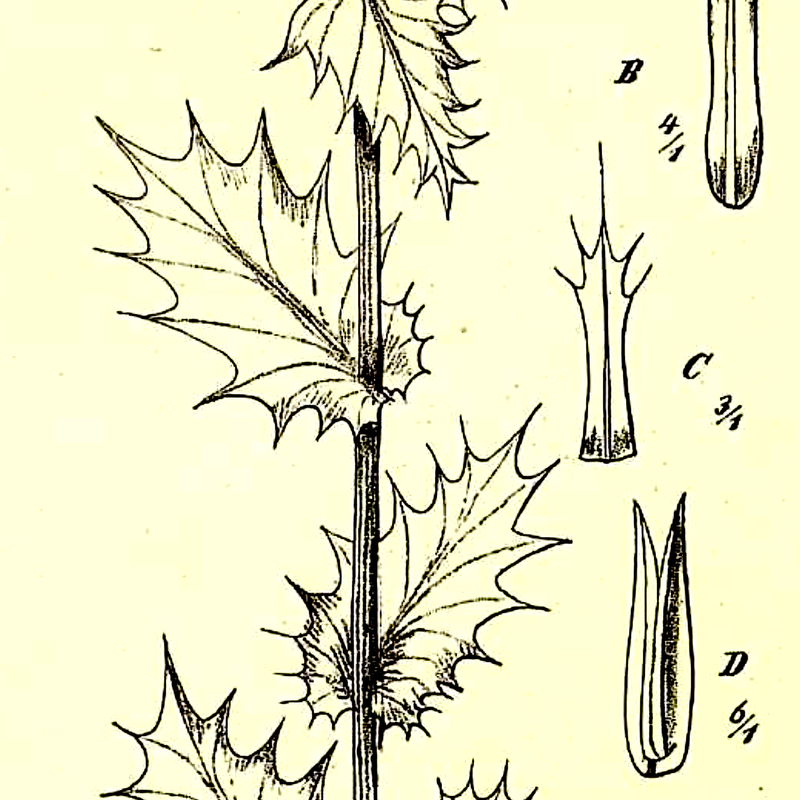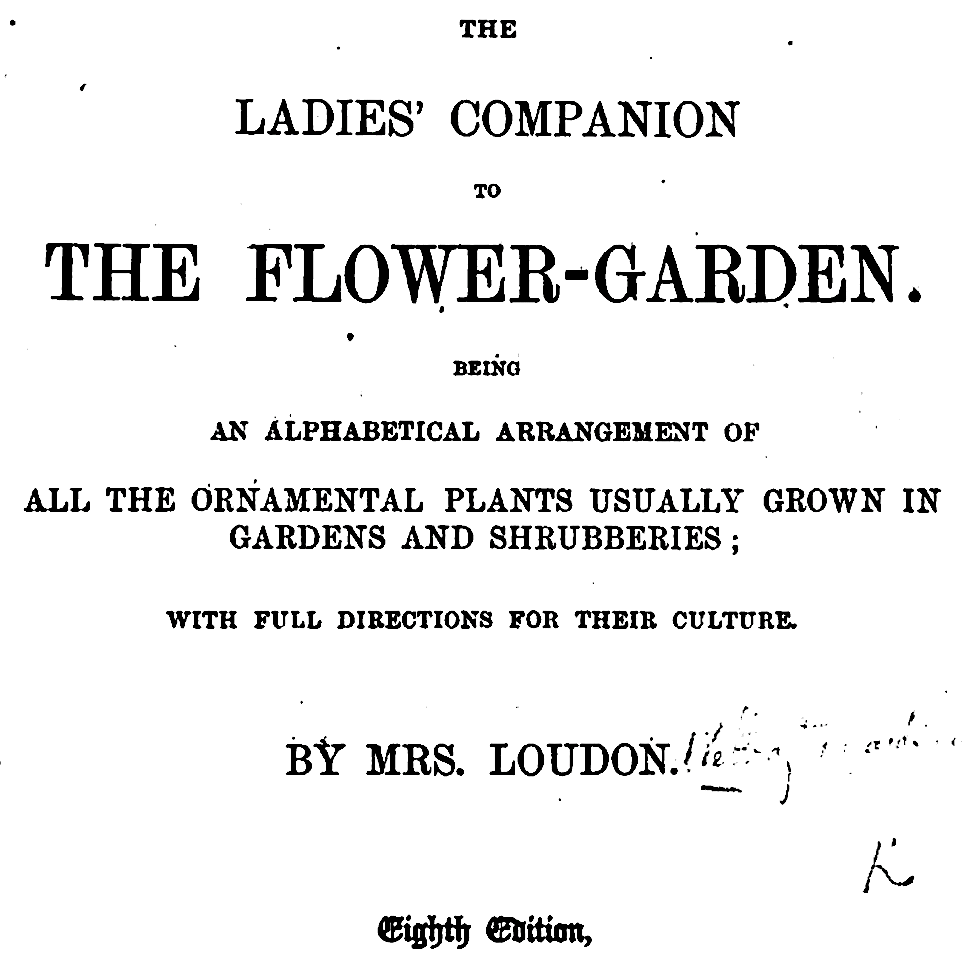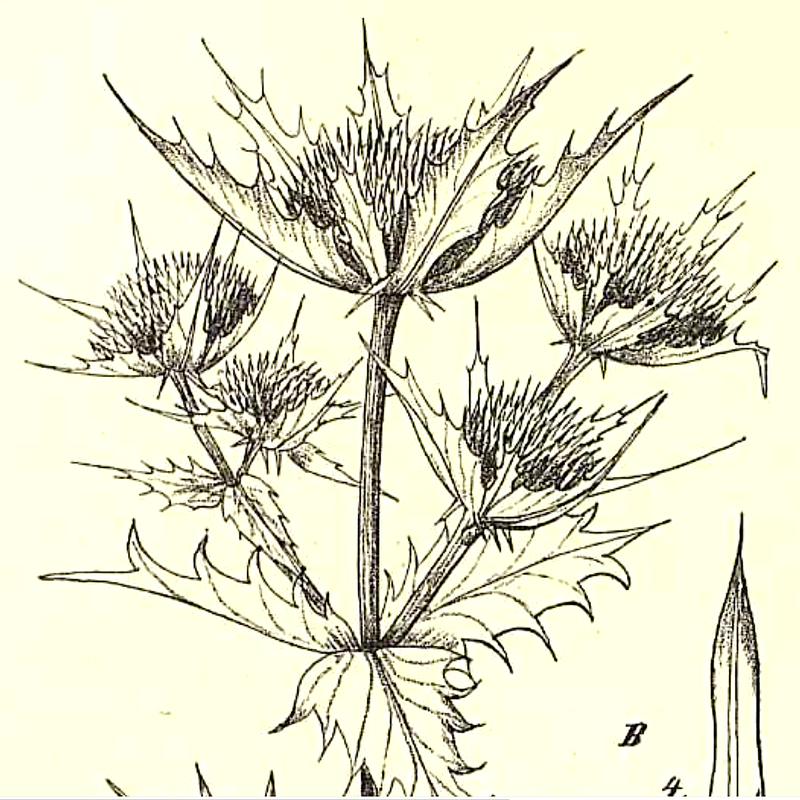Several species once grown by UK gardeners appear to have vanished from the horticultural scene - here are some examples. Have you spotted any of them growing nearby? Do you have any pre-war books or plant catalogues that might shed more light on their garden history? If so, we'd love to hear from you!
Eryngium prostratum (Creeping Eryngo)
a tiny, scrambling plant dotted with bright blue bobbles
|
Missing since 1920s Origin Southwestern USA Lost in action?
In 1922 Reginald Farrer published The English Rock Garden, in which he recommended Eryngium prostratum with its "rosette of thin, oblong green leaves" and "flowers and frills of a beautiful blue". At the time Farrer wrote, many fine plant collections had already disappeared because of the First World War. Many more would follow suit due to the disruption caused by World War Two. Has the Creeping Eryngo disappeared from the UK, or is it still bravely hanging on somewhere? Between a rock and a wet place? Although Farrar recommended it as a rockery plant, Eryngium prostratum is actually a bog plant, so it's as likely to be found next to a pond as in a crevice garden. If you grow, or know someone who grows, this miniature marvel, please let us know! In fact we'd be grateful for information about any small eryngium with blue flowers, because we're also keen to research the garden history of species such as Eryngium viviparum (one of Europe's rarest wild plants but reputed to have been available a UK nursery as late as 2014) and the Australian form of Eryngium vesiculosum. |
Eryngium serra
a South American giant with seriously saw-toothed leaves
|
Missing since good question... see below! Origin Argentian, Brazil, Paraguay, Uraguay Everywhere... and nowhere
At first sight, Eryngium serra isn't missing at all. Several British nurseries currently sell it. Seeds are widely available online. The problem is that so far these have turned out to be mistaken identifications. The plants we've seen from nurseries are lovely eryngiums - but they're not Eryngium serra. And apart from the small problem of not germinating, the seeds we've tried are illustrated with photos of plants that don't quite look the part. There are other alarm bells. One supplier says their stock originates from plants collected in Chile. Hmm... according to Kew Garden's Plants of the World Online, E. serra doesn't grow in Chile! Wisdom teeth Fortunately there's an easy way to weed out most pretenders. Eryngium serra is a big, bold plant with a rosette of strappy leaves. Those leaves are toothy. So toothy that even the teeth have teeth on them, as you can see from the illustration in Flora Brasiliensis. As botanists put it, the leaves are 'doubly serrate'. If the leaves aren't doubly serrate, it's not Eryngium serra. If you know of an eryngium with strappy, doubly serrate leaves, we'd love to hear from you! |
Eryngium aquifolium
a sea holly that really does look like holly!
|
Missing since early 2000s Origin Southern Spain, Morocco Valued by the Victorians?
Eryngium aquifolium was apparently sufficiently common in the mid 19th century to be the only sea holly listed in The Ladies Companion to the Flower Garden, where it was described as "an umbelliferous perennial with blue flowers, a native of Spain, which should be grown in very sandy loam". It is also name-checked in the August 1865 issue of The Floral World and Garden Guide magazine. We haven't yet found any published reference to it as a garden plant after that, although a well-known plantsman recently told us he had had it in his collection until a few years ago. Prickly customer The only other sea holly grown in British gardens whose leaves look plausibly like holly leaves is the native species, the elegant grey-green Eryngium maritimum. Eryngium aquifolium, however is an altogether lankier plant, with fewer, narrower involucral leaves surrounding the central umbel of each flowerhead. If you've seen Eryngium aquifolium, or something like it, growing in a British garden - or if you have any old gardening books, seed lists or plant catalogues that might help us fathom the history of this elusive plant between the 1860s and the present day - please get in touch! |
Other 'missing' species we're researching include Eryngium corniculatum, Eryngium duriaei and Eryngium carlinae. We'll post more particulars about them soon. In the meanwhile, please contact us to be notified of major website updates.
